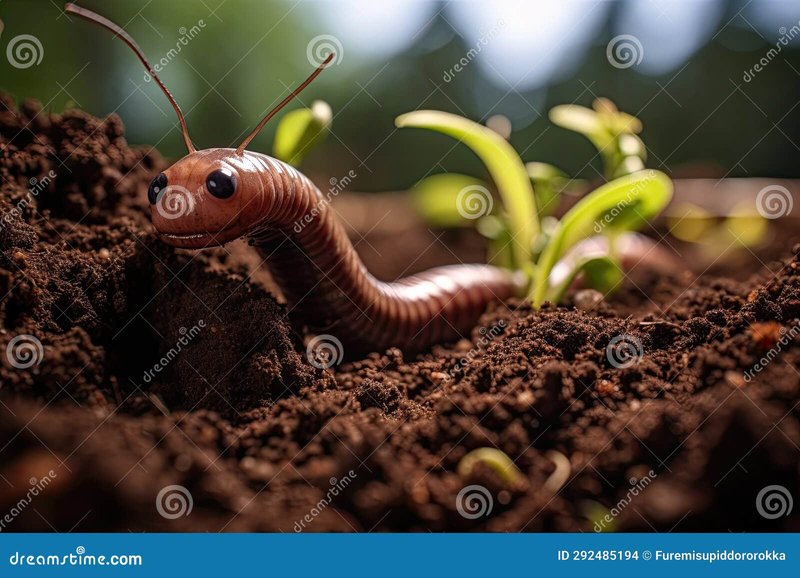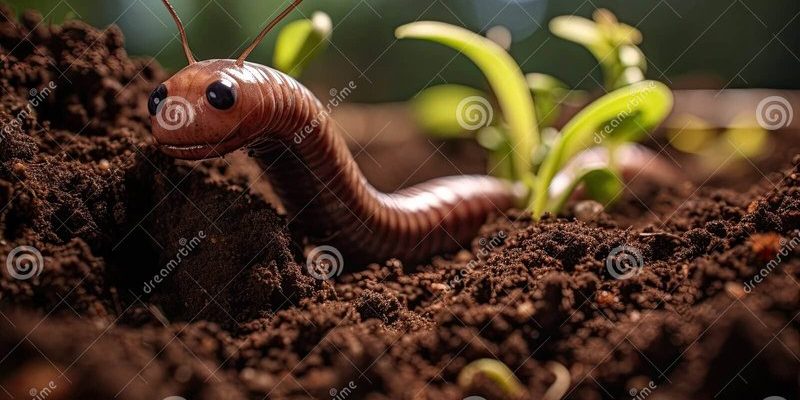
Think of soil like a giant sponge. It holds water, provides nutrients for plants, and is essential for our ecosystems. However, when that sponge gets worn down or washed away, it can lead to serious problems, just like if you squeezed a soaked sponge too much—the water escapes, and it’s not as effective anymore. Earthworms help keep that sponge intact. They improve soil structure and help prevent erosion, which is a significant issue, especially with climate change and more unpredictable weather patterns. Let’s dive deeper into how these fascinating creatures work their magic!
Understanding Soil Erosion
Soil erosion is a natural process, where the top layer of soil gets washed or blown away. You might be wondering: why does this matter? The topsoil is often the most nutrient-rich layer, making it vital for agricultural productivity and plant growth. When erosion happens, we lose not just soil but also important nutrients, which can result in decreased crop yields and increased runoff.
There are several factors that can lead to soil erosion. Heavy rainfall, strong winds, and even human activities like farming or deforestation can strip the land of its topsoil. Imagine a beautiful garden after a storm—if it rains too hard, the water can wash away all the pollen and nutrients, leaving the plants bare and struggling. This is where earthworms come in, providing a solution to help combat these issues.
Earthworms: Nature’s Soil Engineers
Earthworms play a vital role in keeping our soil healthy. As they tunnel through the ground, they create spaces for air and water to flow. This process is often likened to a natural aeration system. When you aerate your garden, you’re making holes in the soil to help it breathe. Earthworms do this naturally, which helps plants get the water and nutrients they need to grow strong.
Moreover, as they eat through decaying organic matter, like leaves and dead plants, they break it down into nutrient-rich castings, often referred to as worm poop (yes, that’s a technical term!). These castings are packed with nutrients like nitrogen, phosphorus, and potassium, which are essential for plant health. So, not only do earthworms help with soil aeration, but they also contribute to enhancing soil fertility, making it a win-win situation!
The Role of Earthworms in Erosion Control
So, how exactly do earthworms help prevent soil erosion? One of their main contributions is improving soil structure. When soil is compacted (think about how hard-packed little kids make the dirt when they play), it becomes prone to erosion. Earthworm activity loosens the soil structure, making it more resistant to washing away during heavy rains.
Also, by creating burrows, earthworms help manage the flow of water in the soil. Their tunnels allow rainwater to infiltrate better instead of running off the surface. You can think of it as a drainage system—when water seeps into the ground instead of pouring off like a flash flood, it reduces erosion significantly. The more earthworms in the soil, the better it can hold onto its vital nutrients and moisture.
Creating a Worm-Friendly Environment
If you want to reap the benefits of earthworms, it’s essential to create an environment where they can thrive. First, **avoid using chemical fertilizers and pesticides**, as these can harm earthworm populations. Instead, opt for organic mulch or compost, which not only enriches the soil but also provides food for the worms.
Another way to encourage earthworms is by planting cover crops like clover or rye. These crops help protect the soil from erosion by providing ground cover and reducing compaction. Plus, when they decay, they give earthworms a tasty meal. Think of it as throwing a party for your local worm population!
Additionally, practice reduced tillage methods, which disturb the soil less and prevent harm to earthworm habitats. Tilling might seem necessary for preparing your garden, but it can destroy the worm tunnels and disrupt their ecosystem.
Earthworms vs. Other Erosion Control Methods
While earthworms are excellent at preventing soil erosion, they aren’t the only players on the field. There are other methods you might consider, such as planting vegetation or building physical barriers like retaining walls. However, you might be surprised to learn that letting earthworms do their thing can often be more beneficial!
For instance, planting trees and shrubs can help reduce wind and water erosion, but they take time to grow. On the other hand, earthworms work constantly, improving soil structure and fertility as they munch away. Plus, they don’t require much maintenance—just leave them be, and they’ll do their job!
Another comparison is with artificial ground covers or erosion-control mats. While these can prevent erosion, they don’t enhance soil health like earthworms do. So, while there are various methods to combat erosion, earthworms provide a natural solution that benefits the ecosystem as a whole.
The Importance of Earthworm Diversity
You might not realize this, but not all earthworms are created equal. There are over 4,000 species of earthworms worldwide, and different species contribute uniquely to soil health. Some species are better at breaking down organic matter, while others excel at improving soil structure.
This diversity is crucial for a healthy ecosystem. Just think of it like a team of superheroes—each one has unique powers that contribute to a greater good. By promoting a diverse earthworm population in your garden or farmland, you’re ensuring a robust defense against soil erosion and boosting overall soil productivity.
In urban areas, promoting earthworm diversity can be a bit trickier, as pollution and poor soil quality can hinder their populations. However, creating more green spaces, reducing pesticide use, and raising awareness can help nurture these critters back to health.
Taking Action: How You Can Help
So, what can you do? If you’re interested in earthworms and their role in preventing soil erosion, there are several actions you can take to create a positive impact. Start by educating yourself and your community about the benefits of these little creatures. You might even consider setting up a worm composting bin at home, creating a mini-ecosystem that helps reduce waste while nurturing the worms.
When gardening or farming, practice sustainable methods that protect the soil. By rotating your crops, using organic fertilizers, and minimizing soil disturbance, you’re encouraging the local earthworm population to grow and thrive. Talk to your neighbors or local gardening clubs about implementing sustainable practices together. Remember, small changes can lead to significant impacts when it comes to soil health and erosion prevention.
So next time you spot an earthworm squirming in the garden, give it a nod of appreciation. These little creatures are crucial allies in the fight against soil erosion, helping keep our earth healthy and fruitful. Together, we can all contribute to a more sustainable environment—one worm at a time!

